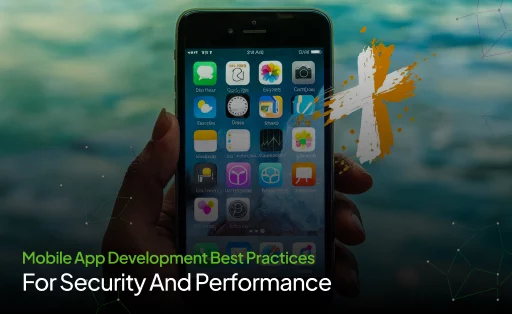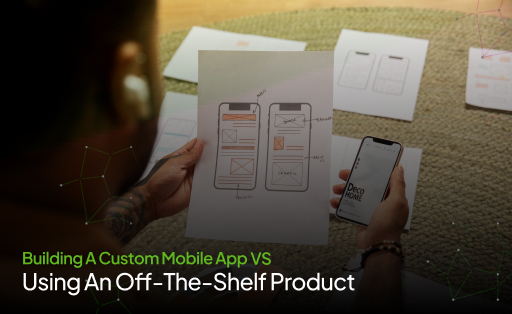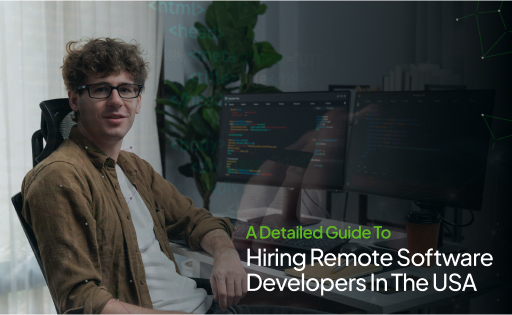Building an AI SaaS Products: A Detailed Roadmap Saas Development
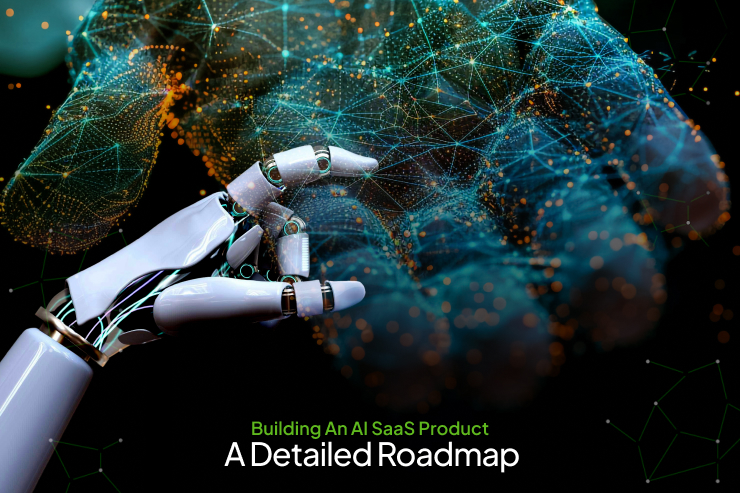
Be ready for AI’s revolutionary potential if you offer software as a service. And if you’re going to create one, you must think about incorporating AI from the beginning. If not, you run the danger of falling behind your competitors who do.
The SaaS industry already has a potential of huge profits, with an anticipated global market volume of growing to USD 942.96 Billion by 2032, as per the report by SkyQuest.
However, the research suggests that incorporating AI into SaaS might speed up the financial growth of the industry. The need for AI solutions tailored to a particular business is driving the market for AI software as a service. Growth in the market is also being driven by the development of AI-powered applications for various industries and the improvement of deep learning methods. The Verified Market Research analyst projects that the Artificial Intelligence SAAS Market will surpass the 2023 valuation of around USD 71.54 billion, reaching a CAGR of 38.28% from 2024 to 2031.
Even while SMBs want to incorporate generative AI into their SaaS offerings, many face hiring, compliance, and technology barriers. However, Progatix, a custom software and app development company, has years of experience with AI and is willing to assist. So continue reading if you want to build AI software as a service from the start. This blog guide will show you how to build an AI SaaS product, mainly,
- The tech stack you should use.
- Causes to invest in your artificial intelligence SaaS product
- Challenges you should expect.
- Inventive product ideas to be prominent in the market.
Let’s start.
What Is A SaaS Product?
SaaS, or Software as a Service, basically means applications that are made to work on the cloud. Instead of downloading the software to their device, users can access SaaS apps from their web browsers.
SaaS applications make it easier for SMBs to scale their solutions. They can use limited computing power to launch a SaaS application on the cloud rather than spending money on expensive infrastructure. Businesses can then expand their cloud resources in accordance with the growth of their user base.
SaaS is now widely utilized in several different business processes and industries. For instance, Netflix enables paid users to stream videos from any device, while Google Docs is a software as a service that allows for text editing.
What Happens When We Integrate AI Into SaaS Products?
SaaS is already a game-changing technology on its own. SaaS reshaped the way SMBs marketed the software in the early 2000s. Offering SaaS products maximizes the adaptability, affordability and accessibility of your business’s services. Also, users appreciate the ease that SaaS offers.
We are now experiencing huge companies combining generative AI with SaaS. Additionally, we anticipate a number of intriguing findings that will be beneficial to users and SMBs equally.
-
Provide You With Insights Into Customer Behavior
SaaS products gather data from user interaction with the apps. With AI, SMBs can better comprehend customer behaviour by examining the fundamental patterns.
Examples
You can implement predictive analytics, a kind of AI technique, to forecast future trends in accordance with the sales data, market variables and customer behaviors.
-
Enable You To Deliver Tailored App Experiences For Users.
Generative AI surpasses analyzing data at a scale that usual SaaS technologies cannot. It enables SMBs to provide personalized app experiences for each user.
Example
Imagine an AI chatbot using your SaaS product to respond in exactly the same tones and styles as the user.
-
Get Your Business Operations Automated
Another benefit an AI offers to SaaS is the capability to automate routine tasks more efficiently. Beforehand, SaaS products needed considerable effort from users for monotonous tasks such as reporting and data entering. With huge language models such as GPT, such tasks could be automated, enabling users to be more useful.
Example
Instead of spending hours filling out paperwork, allow an AI-powered chatbot to manage it for you.
Steps Involved In The Development Of An AI SaaS Product
Similar to any software, a detailed plan and a team of multi-talented developers are required to develop an IT SaaS product. Here are the steps involved in helping clients integrate AI with their SaaS products.
1. Define Your Goals
Start with having clear objectives for why you want to create an AI-powered SaaS product. Don’t start these projects simply to follow the AI trend. Instead, consider whether it corresponds to the objectives of your company.
Having said that, we would want to inform you that generative AI, no matter how advanced, does not increase a product’s marketability. Instead, your SaaS application should be built on strong business concepts, which include solving the user’s problem.
Therefore, ask these questions before investing more money and time in an AI SaaS product.
- Is your SaaS solving a problem?
- What could an AI SaaS platform do?
- How does it help with your business growth?
Why is it important to users?
2. Conduct Market Research
Once you are clear, you are required to evaluate if your idea is achievable in the market. Or else, you risk building a product that users do not find pleasing. You may also lose present users if the AI features you created delay instead of helping their workflow.
To help you recognize AI features that users require, we survey and interview your potential users. By doing that we could define if there is any requirement for particular AI features in your SaaS product. As our team conducts market research, we also avail the possibilities and challenges that assist you review your ideas.
While surveying your users, we also look into your competitors. There is a possibility that few have already integrated AI into their SaaS products. We take notice of user feedback, possible challenges and AI-powered features. Further, we combine our outcomes to assist you with your SaaS AI deployment.
3. Identify AI Capabilities And Features
AI allows a huge range of potential in your SaaS product. But, not every app feature needs frequent updates, which require a high price. As a business owner, it’s crucial to focus on particular features that bring in huge revenue.
We achieve this by examining the issues users have with the products of your business or competitors. Seek out a problem for which there aren’t many or any SaaS solutions. Here’s where you can use AI to experiment and make an enormous impact. We suggest beginning by concentrating on one or a small number of attributes. After AI integration is successful, expand its use.
Following feature identification, we help you in determining whether existing AI technologies might be used to innovate them. More importantly, calculate the cost because implementing some AI technologies can be costly because they are still in their development phase. Generally, we can use these technologies to offer additional AI capabilities to your products.
- Machine learning for automation and predictive analysis.
- Deep learning for accuracy in forecasting, customization, and content production.
- Using computer vision to create and analyze images
- Natural language processing for chatbots and sentiment analysis.
As you combine AI technology with an app feature, be aware that each has its own perks and challenges. For instance, computer vision models can excerpt spatial details from image files but cannot comprehend the contextual settings of words in a sentence. Thus, it’s better to work with skilled AI developers and business analysts earlier to begin using AI in your SaaS product.
4. Prepare AI Training Data
Simply connecting to publicly available AI models such as GPT, Llama, or Bert won’t allow you to develop an AI SaaS product at no cost. Even though these models have been pre-trained on large datasets, they are not yet appropriate for your company. For instance, when employed as a chatbot, the GPT model is unable to respond to consumer concerns since it is uninformed of the product your business sells.
Before utilizing a core model for your SaaS application, it must be trained or refined. We could help you in that regard, as we have been doing them for a number of AI-powered products. You must still prepare training data for the model to learn from, irrespective of the method you choose. The bias, accuracy, and consistency of the AI model are all affected by the quality of the training data. As a result, you must decide where and how to find the data.
Data scientists, data labellers, and industry experts must work collaboratively to prepare the data. For this reason, hiring an AI development company to help you prepare the dataset is preferable. In this manner, you may focus on marketing, brand expansion, client interaction, and other essential business operations.
5. Select The Right AI SaaS Development Tech Stack
Where our AI professionals prepare the training data, they also decide on the right AI technologies, SaaS tech stack, and cloud infrastructure for our client’s project requirements.
-
AI Tech Stack
At Progatix, we use a variation of AI models and algorithms based on the features you want to build:
o Generative Models: GPT-3/4, DALL-E, Stable Diffusion, and Midjourney for creating text and images.
o Neural Networks: CNN, RNN, and Variational Autoencoders for data analysis and content creation.
o Image Classification: ResNet, MobileNet, and EfficientNet for object detection and image study.
o Image Segmentation: U-Net, Mask R-CNN, and DeepLab for detailed image part identification.
o Object Detection: YOLO, Faster R-CNN, and CenterNet are used to locate objects in images and videos.
-
App Development Tech Stack
For SaaS app development, we utilize the following tech stack:
- Front-End: React and Redux for scalable and appealing web apps.
- App Development: Kotlin, Swift, and Flutter for Android, iOS, and cross-platform apps.
- Back-End: Node.js, TypeScript, and Next.js for robust services.
- Databases: NoSQL, SQL, and Redis for reliable data storage.
-
Cloud Infrastructure
SaaS apps are hosted on the cloud for stress-free scalability, with managed servers providing load balancers and distributed databases. AI models also need cloud-based servers with GPU/TPU for processing, as the price of preserving such hardware is higher for SMBs. Providers such as AWS and Google offer adaptable, usage-based AI-powered infrastructure.
6. Train The AI Model
After recognizing the AI model, you are required to train or fine-tune it to learn business-determined details. Progatix, instead of training the whole model from the beginning, recommends refining the whole model. The former can cost an excessive price and may take months to finish.
As a business owner, spending possibly millions of dollars for model training is not achievable. Improving a pre-trained model and increasing the amount of money you spend on app marketing makes greater financial sense. For instance, OpenAI offers basic models such as GPT-4o or GPT4. These models are already competent in natural human-like speech on their own. Therefore, improving the model is all that is required, and it requires a lot less resources than model training.
A model can be fine-tuned by feeding it predefined training data, which will help it retain prior knowledge while learning new insights unique to your company. Compared with complete training, this method is simpler and more affordable, requiring only a few days and thousands of dollars rather than months. The model can successfully answer business-related questions once it has been adjusted.
7. Prepare The SaaS For Integration
While the AI model is being trained, you can evaluate your SaaS application and carry out the required development work to speed up AI integration. This involves carrying out a technical audit to determine whether a minor adjustment, significant change, or complete redesign is necessary.
Your integration timeline could shift based on the final result. You will be forced to rewrite your SaaS application if it was developed using software technologies that are not scalable and compatible with AI models. If not, your developers can update particular app modules to enable smooth data transfer with AI models.
Both ways, integrating an AI model into SaaS does not essentially require to be a challenging process. These days, on no-code/low-code platforms, we could build an MVP for a SaaS app within a matter of months.
For instance, we use good no-code/low-code tools to develop your AI SaaS app, out of which a few are:
8. Ensure Compliance And Data Security
The regulations that the app must adhere to must be considered during the AI SaaS development phase. In particular, there are regulations that control how SMBs manage and preserve user data if they’re developing AI SaaS solutions for the healthcare, financial, or retail industries.
For instance, HIPAA, GDPR, and other privacy laws must be followed when building a medical AI-powered SaaS. Fintech applications also need to follow PCI-DSS, KYC, and other banking rules.
SMBs must safeguard the data gathered, kept, and examined by their AI SaaS app, as AI models managing large amounts of data are key targets for cybercriminals. To avoid breaches, AI developers apply security measures at the code, system, and infrastructure levels. Progatix executes the following security practices:
- Encrypt data and keep it in a safe cloud database.
- Conduct vulnerability assessments on present SaaS apps by employing Dynamic Application Security Testing (DAST) and Static Application Security Testing (SAST) tools.
- Implement OWASP safe coding practices to form a strong codebase.
9. Integrate And Assess AI SaaS
This step involves gathering the AI model with your SaaS product. Usually, we connect the app to the AI model by utilizing the APIs provided by the AI Company. For instance, OpenAI enables developers to access AI functionality by buying an API key. With APIs, there’s a little bit of coding integrated, which means we can assist you reach the market fast with the novel AI functionalities.
When we integrate AI with your SaaS product, we are careful not to interrupt the workflow users are aware of. Instead, we address how to launch the AI features as continuously as possible. To do that, Progatix’s UI/UX designers work collaboratively with app developers to ensure a smooth user journey after AI integration.
After integration, we guarantee that the AI functionality creates consistent and precise responses. As you may be aware, generative models are vulnerable to bias and imprecise responses. Such anomalies might arise from the model itself or from the training data it acquires.
Thus, we assess the model performance by testing it opposite to the standard benchmarks and also real-life cases. If the AI model fails to cater to the necessary performance standard, we will refine and adjust the model’s constraints further.
10. Perform Quality Assurance
Similar to AI models, the SaaS application needs to be continuously tested to make sure it is accurate, dependable, and safe. We use a continuous testing approach during the whole app development process to accomplish that.
In order to lower remediation costs, we find bugs, vulnerabilities, and technical shortcomings as soon as possible. Your operations will be less disrupted the quicker we find and address app issues.
- Our QA engineers carry out a number of tests to do that.
- The unit test ensures every individual module of the SaaS app is functioning as per the specifications.
- An integration test is performed to ensure all 3rd party services are functioning cohesively and dependably with the app.
- The system test evaluates the app’s overall performance.
Regression test is conducted by the QA engineers to ensure the app’s present functions are modest by new AI capabilities.
11. Launch The AI SaaS App
Once you are happy with your app’s performance, get ready to launch it. Before doing so, make sure that you have informed all the stakeholders about the change. It includes:
- Brief and train your customer support on the awaiting updates.
- Alert users of a scheduled update, new AI features and the influence on their workflows.
o Keep your technical support team on standby.
The app is then made available online, in the App Store, and in the Play Store. After the AI SaaS software launches, keep an eye out for any potential problems. If there are any flaws, fix them right away to guarantee customer satisfaction.
12. Monitor And Improvise
Once the app is up and running, keep an eye on its functionality. Examine whether there are any biases or performance problems with the AI features that were not found during testing.
Track any faults, defects, or vulnerabilities in the software that appear during real-world use. Rest assured, though, that we Progatix offer post-launch assistance to help you in resolving such issues.
Moreover, be ready to update your AI SaaS in reply to variations in trends and technical advancements. As you are aware, AI models are still developing quickly. It may be essential for you to switch to a newer and better model within a few months. Once more, our staff can help you update and release better software versions.
Launch Smarter SaaS Products With Progatix Expertise!
Let's ConnectBenefits of Developing AI SaaS Product
Generative AI technologies have the potential to analyze huge volumes of data at scale and imitate humans when answering the input. When integrated with SaaS apps, you could expect such positive results.
-
Allow Personalization
You could create personalized offers, content, or answers in your SaaS app with the Generative AI. Deep learning models can examine customers’ behaviour, buying history, and other data easily and offer recommendations that are applicable to each of them.
-
Automate Processes More Easily
Before generative AI evolved, SaaS automation was mainly based on pre-set rules. By integrating AI with SaaS apps, you could automate workflows more effortlessly due to the deep learning models that could recognize patterns and automate processes autonomously.
-
Build Highly Scalable SaaS Product
Generative AI models could assess huge data and considerably lessen manual interference. After deployment, you could expand the AI features to a wider group of users with no ascending increment in cost, talent and resources.
-
Offer Constant Improvements
AI-SaaS solutions have the ability to learn from user interactions and make real-time improvements, compared to traditional SaaS products. An AI chatbot in a medical app, for instance, can change its speech pattern to sound more sympathetic to patients.
-
Allow Predictive Analytics
The capacity of AI to predict future trends with remarkable precision is another advantage it offers SaaS. SaaS companies can take preventive measures to prevent negative reactions in this way, such as engaging customers, restocking products, or establishing an advertising campaign.
Challenges in the Development of AI SaaS Products
AI SaaS development services comes with a few challenges that are:
-
Security And Legal Considerations
Massive data drives Generative AI models, few of which possibly comprises crucial details. Thus, SMBs might face challenges in compliance with legal acts, making the data secure and safeguarding user’s privacy. For instance, the EU AI Act and Algorithmic Accountability Act have been planned to regulate AI development in the European Union and the US, correspondingly.
Solution
You should consult with AI developers about compliance standards earlier to build your AI SaaS app.
-
AI-Ready Cloud Infrastructure
Selecting a cloud provider for your SaaS product is simple, but finding one that supports AI features is more difficult. Dedicated GPU/TPU for deep learning model training, operation, and scaling is not accessible from all cloud providers.
Solution
Since Progatix has worked with numerous cloud providers, we can help you in selecting one that meets your technological, financial, and security requirements.
-
Data Quality And Accessibility
The data that an AI model learns from determines how well it performs. It can be difficult to gather high-quality data in some businesses, especially when obtaining it is challenging. For instance, obtaining image data to train the model presents legal challenges in specialized areas like medical imaging.
Solution
To avoid training the model from the beginning, use pre-trained models. Collaborate closely with AI specialists to obtain more training data from your business resources.
-
Integration With Existing Systems
Because generative AI is developing rapidly, certain software systems have fallen far behind. It might be essential to redesign some modules, particularly those that were constructed using legacy technology, in order to include new AI features when combining AI with SaaS.
Solution
Audit the current systems. Decide on the next course of action after listing those that cannot be integrated with AI features.
-
Professional And Skilled Development Team
Not all developers have the specialized knowledge and abilities required to create an AI SaaS program, such as machine learning, computer vision, and data analysis. It can be challenging to locate generative AI developers in your local market because demand for the technology is greater than supply.
Solution
Work with renowned AI development companies like Progatix or hire skilled AI developers within.
Perspective AI SaaS Product Concepts for Your Business
You should know more about building AI SaaS products by now. We’ve listed some more ideas below in case you need more encouragement.
-
CRM
Generative AI can be used to develop CRM software that assists entrepreneurs in increasing sales and customer engagement. One AI SaaS platform in this category is Salesforce Einstein. It employs machine learning, natural language processing, and predictive analytics to optimize CRM processes.
-
Customer Support
If you deliver SaaS products with customer support, getting a boost with AI could enhance response time, maximize customer satisfaction, and offer fast responses to your customers’ queries. Zendesk Answer Bot is one example of that. AI chatbots help lessen the human support personnel’s workload by implementing machine learning to reply with answers resulting from a company’s database.
-
Marketing Automation
Marketers utilize AI-powered SaaS apps to optimize their campaigns, craft improved content, and assess the outcomes led by data-driven insights. One of the several SaaS platforms is HubSpot, which integrates AI into several tools so that marketers can function smarter to accomplish targeted outcomes.
-
Human Resource Management
Managers employs SaaS apps to simplify HR management tasks such as, onboarding, training, and appraisal. They could get advantage from the deep analytics offered by an AI. Plai, a simple and powerful performance management platform, has an AI integration that could acclaim employee’s growth plans based on their appraisal data.
-
Sales Optimization
With Generative AI leading, expect sales personnel to utilize SaaS apps more effectively to predict demands, examine sales data, and devise revenue growth strategies. Clari, a cloud-based sales management platform, is a good example of this. This platform uses AI to forecast revenue growth, review possible deals and automate sales processes.
Why Develop Your AI SaaS Product with Progatix?
Progatix is a professional custom software and apps development company, offering AI-powered SaaS solutions that align precisely with your company’s objectives. We promise seamless AI integration for improving automation, personalisation, and predictive analytics in your apps thanks to our deep understanding of cloud-based SaaS systems, AI, and machine learning. Our UI/UX designers, AI specialists, and skilled developers work together to provide scalable, safe, and high-performing SaaS solutions that propel business growth. Progatix ensures your business stays ahead of the competition in the tech industry by offering end-to-end AI SaaS development, from ideation to launch and continuous optimization, whether you’re seeking AI chatbots, predictive analytics, or process automation.
Final Words
When you develop an AI-SaaS product, you will immediately see results like automation, personalization, and data-driven insights. AI integration will offer you a competitive edge whether you’re marketing, customer service, sales, or any other division.
How to create an AI SaaS product has been addressed. It makes sense that the majority of SMBs possess the skills and resources required to accomplish it. Therefore, working with a seasoned AI development company like Progatix is ideal.
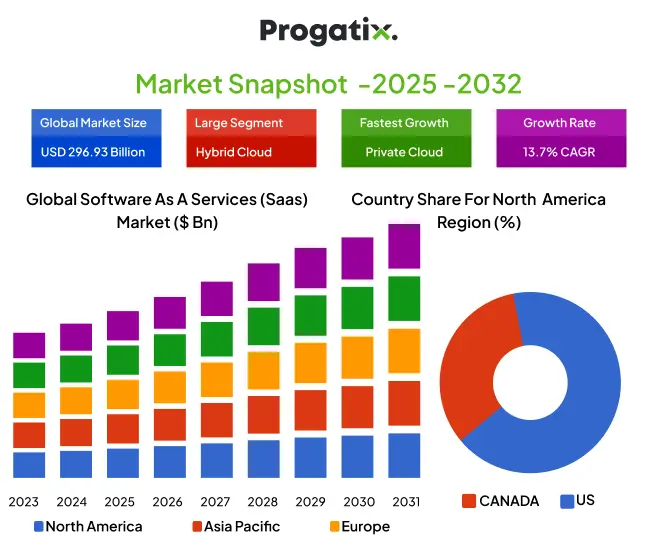


 Let's Discuss Your Tech Solutions
Let's Discuss Your Tech Solutions 

